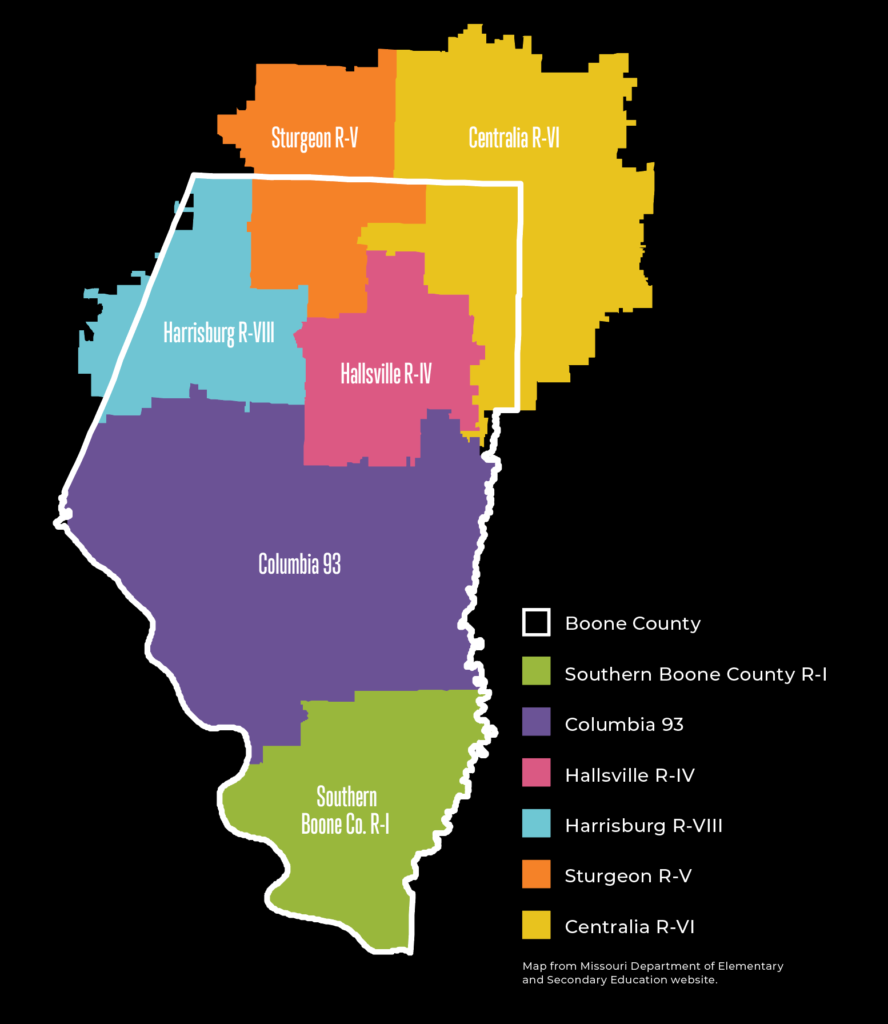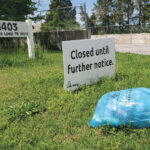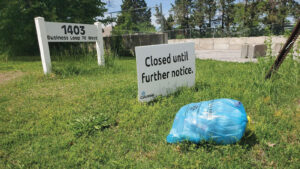School districts in Boone County want to pay their teachers better. The trick is figuring out how to make it happen.
In May 2024, Missouri Gov. Mike Parson signed Senate Bill 727. Among its provisions is the increase of base teacher salaries in all Missouri public schools from $25,000 to $40,000. Salaries must rise annually to reach $48,000 during the 2027-2028 academic year.
On its face, that seems a significant improvement for elementary and secondary education. After all, the state consistently ranks fiftieth — dead last — in the nation for starting teacher pay and nearly as low for average teacher salaries.
According to the National Education Association’s 2024 Educator Pay Data, the national average starting teacher salary is $44,530 and the national average teacher salary is $69,544. In Missouri, those figures are $36,829 and $53,999, respectively. Few would deny that public school teachers need and deserve higher salaries. But many school districts are already struggling to make ends meet.

The State Demands a Raise
In Missouri’s fiscal year 2023 budget, a line item established a Teacher Baseline Salary Grant to help districts with base salaries under $38,000 to raise the amount. The $38,000 wasn’t a mandate but a pointed suggestion to pull Missouri up in nationwide rankings. Districts under the target can apply for grants totaling up to 70 percent of the targeted baseline salary shortfall. The other 30 percent must be raised locally, such as through a foundation or other revenue source.
There are six school districts in Boone County, including Columbia Public Schools, Centralia, Hallsville, Harrisburg, Southern Boone, and Sturgeon. Southern Boone, Hallsville, and Sturgeon applied for grant funding to meet the $40,000 requirement. For example, Sturgeon’s base is $35,500, so it needed assistance to fund the shortfall.
Among the districts that don’t qualify for a grant is Harrisburg, whose base teacher salary is one of the highest in the state at $44,000 this year — edging out the $43,000 base salary for Columbia Public Schools. Centralia is right on the money at $40,000.
It’s a mistake to assume that out-county school districts have little influence on Columbia’s workforce and economy. The truth is striking: Scores of teachers throughout Boone County live in Columbia or have a Columbia address.

When it comes to applying the new pay standards, district size doesn’t necessarily matter. Harrisburg’s total enrollment is by far the smallest of the Boone County districts at just 613. While that means it receives substantially fewer dollars from Missouri’s funding formula, it’s nonetheless paying its teachers better. Harrisburg Superintendent Steve Combs said it’s about commitment from everyone.
“It’s a combination of the commitment of our community, our school board, administration, and teachers,” he said. “Our teachers are our frontline workers. Salaries recognize their value.”
Combs said that when the district asked voters to increase the tax levy, they obliged. The school board recognizes that teachers are the district’s most valuable assets. And teachers go the extra mile by wearing more than one hat for their students, as coaches or bus drivers.
So, What’s the Problem?
There are a couple of key issues with the minimum base salary mandate. The first involves each district’s salary schedule. Teachers aren’t paid like corporate office workers who might earn an individual raise or bonus. They are paid according to a schedule of “steps” that factor in years of experience and advanced degrees and certifications. If you change that first step — the minimum salary for a full-time first-year teacher with a bachelor’s degree — everything else shifts. In other words, salaries rise for everyone.
The second issue is the grant funding itself. Although the $40,000 minimum is mandated in SB 727, the funding is not. That means school districts must rely on the legislature to approve funding for the grant program each year. Of course, that begs the question: What happens if they don’t?
Salaries and benefits constitute the lion’s share of a district’s budget. For CPS, for example, those accounted for nearly 52 percent of expenditures in 2023-2024. If a district like Sturgeon can’t get the grant because it’s unavailable, its students would pay the price.

“Sturgeon R-V is committed to improving salaries for our staff and believes all teachers deserve better compensation,” Superintendent Dustin Fanning said, spelling out the potential bleak side of the “what if they don’t” question.
“We appreciate the heart of the decision to improve educator salaries and the commitment of the grant to help us meet the minimum base salary requirements,” Fanning added. “Without the grant funding, in years to come, we may be required to make difficult financial decisions and possibly cut staff and programs, increase student teacher ratios, or compress the salary schedule to meet the requirements. These cuts could limit opportunities for our students.”
Fewer staff, larger class sizes, and reduced programs and resources would be the result of the lack of funding. That’s a blow to students, teachers, and communities.
In a letter opposing SB 727, the Missouri American Federation of Teachers, Missouri Association of Elementary School Principals, Missouri Association of School Administrators, Missouri National Education Association, Missouri School Boards Association, and Missouri Parent Teachers Association stated:
“As educators and parents, we oppose SB 727 because we are deeply committed to the well-being and future success of all students. The bill’s unfunded mandates risk placing local school districts in difficult positions, possibly forcing them to increase taxes or cut critical services. Such measures would undermine the comprehensive quality of education and the supportive learning environments crucial for student growth and achievement.”
To understand that concern, it’s important to understand how public schools are funded.
Show Me the Money
Boone County’s school districts are all funded similarly, by a mix of local, state, and federal monies. To use CPS’s 2023-2024 operating budget as an example, 1 percent of revenue is categorized as “intermediate.” That’s generated by such sources as taxes on utilities, fines, and money paid by local companies to the County Stock Insurance Fund. Federal dollars comprise 6 percent of the operating budget, 29 percent is from the state, and a whopping 64 percent of revenue is generated locally.
Property and sales taxes are what generate that local revenue. Tax levies are approved by voters in the individual school districts. Among the Boone County schools, levies range from roughly $4.32 per every $100 of assessed valuation in Centralia to about $5.79 per every $100 of assessed valuation in Southern Boone. And while local voters are typically strong supporters of their schools, they have their limits. That could make it challenging to make up for budget shortfalls if districts can’t meet the minimum teacher pay.
There can be other roadblocks to local revenue. In March 2021, the Missouri Court of Appeals, Eastern District, delivered a ruling in Blankenship v. Franklin County Collector (619 S.W. 3d491) that reduced the levy for CPS by 32 cents, which resulted in an annual loss of roughly $4.5 million.
Federal funding has fallen as pandemic-related distributions have ceased. And the controversial Missouri School Funding Formula has brought in increasingly fewer dollars, year after year. All the while, the cost of staff salaries and benefits have continued to rise, even without a mandate.
The Value of Teachers
It’s obvious that school districts want to pay their teachers better across the board. That strategy should attract the best and brightest to the profession. It also helps smaller school districts compete for talent with larger ones. Every district wants to deliver the best education possible for its students.
“My vision is to be a district of choice and that has to begin with our staff so they can make it a district of choice for our students,” Sturgeon’s Fanning said. “We value our staff and appreciate their work and dedication and want to celebrate the small accomplishments for staff and students alike.”
But when the revenue schools need to operate continues to decline, it’s difficult for districts to compete with salaries in the corporate sector. Some need a little more help than others and gladly accept it for the benefit of their teachers and their students. But that’s only for as long as it’s there.







